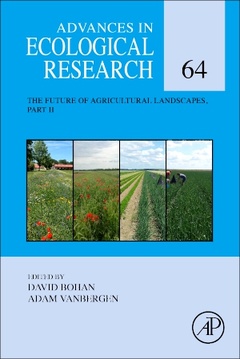Description
The Future of Agricultural Landscapes, Part II
Language: English
Subject for The Future of Agricultural Landscapes, Part II:
Keywords
Ecological Biomonitoring; Biodiversity; Microbiology; Metabolomics
388 p. · 15.2x22.8 cm · Hardback
Description
/li>Readership
/li>Biography
/li>Comment
/li>
Advances in Ecological Research, Part Two, Volume 64, the latest release in this ongoing series, includes specific chapters on Tropical Ecosystems in the 21st Century. Chapters in this volume cover topics such as landscape-scale expansion of agroecology to enhance natural pest control, a systematic review and ecosystem services, and the resilience of agricultural landscapes.
Dave has most recently begun to work with networks. He developed, with colleagues, a learning methodology to build networks from sample date. This has produced the largest, replicated network in agriculture. One of his particular interests is how behaviours and dynamics at the species level, as studied using the carabid-slug-weed system, build across species and their interactions to the dynamics of networks at the ecosystem level.
- Provides information that relates to a thorough understanding of the field of ecology
- Deals with topical and important reviews on the physiologies, populations and communities of plants and animals




